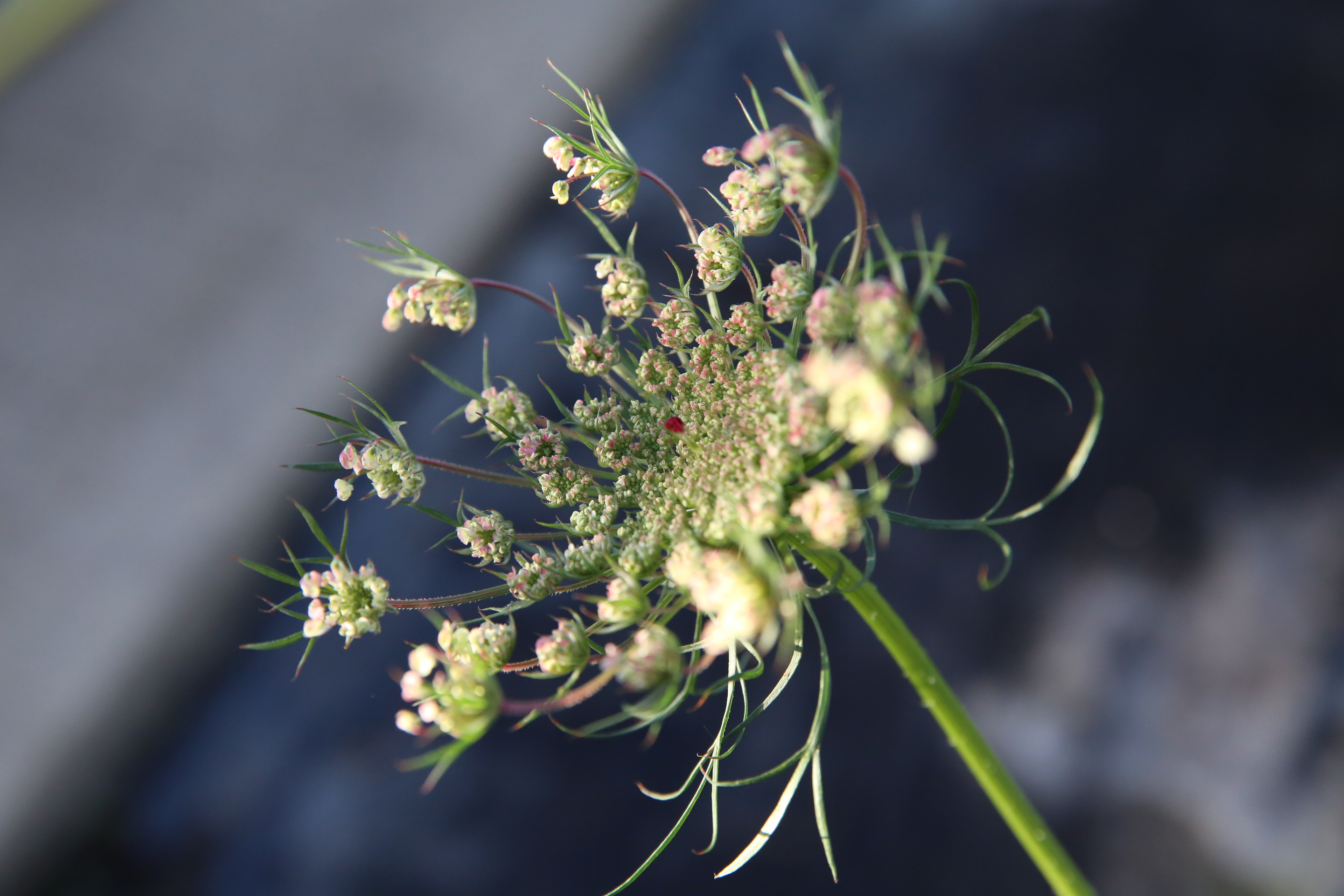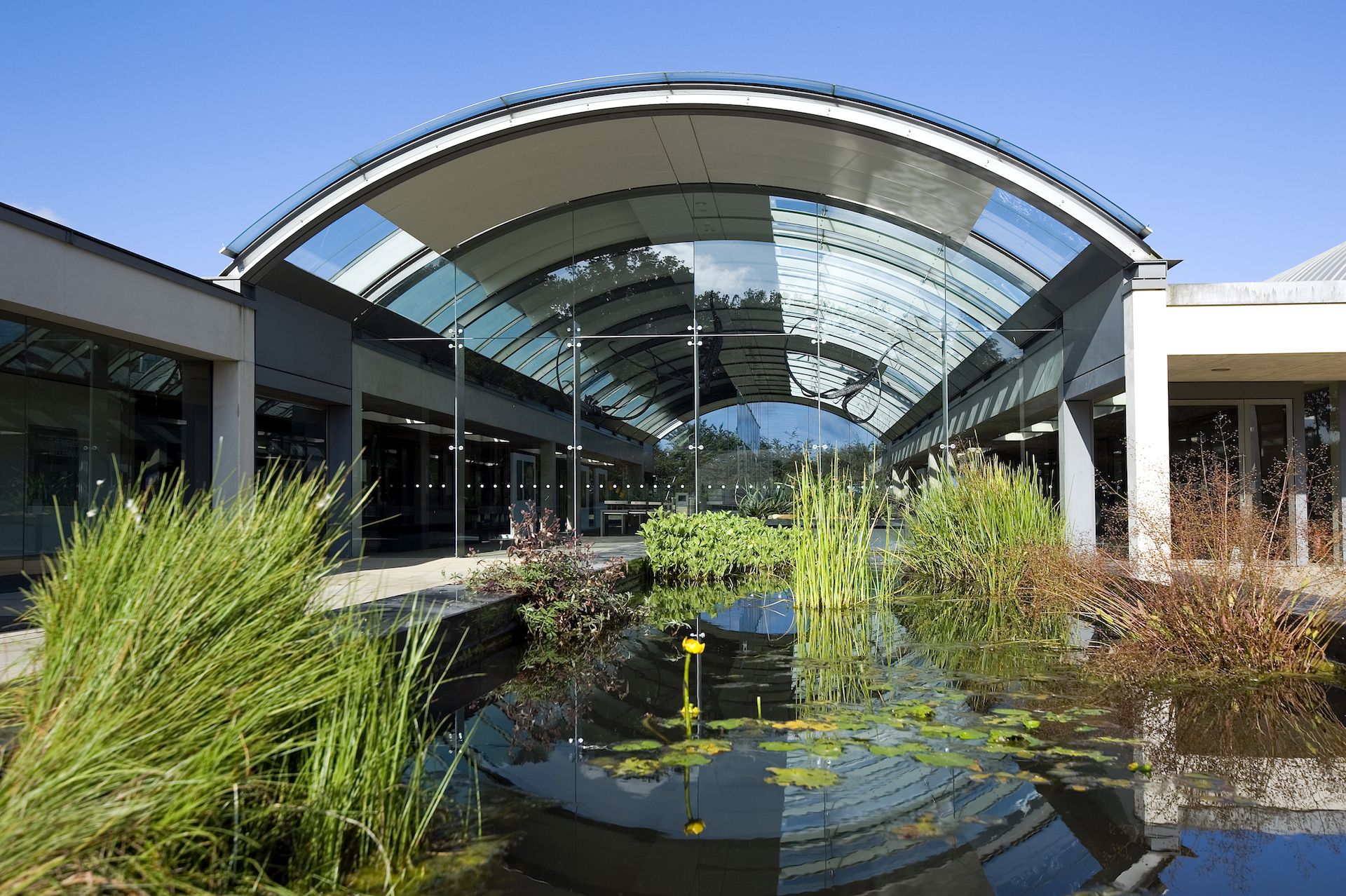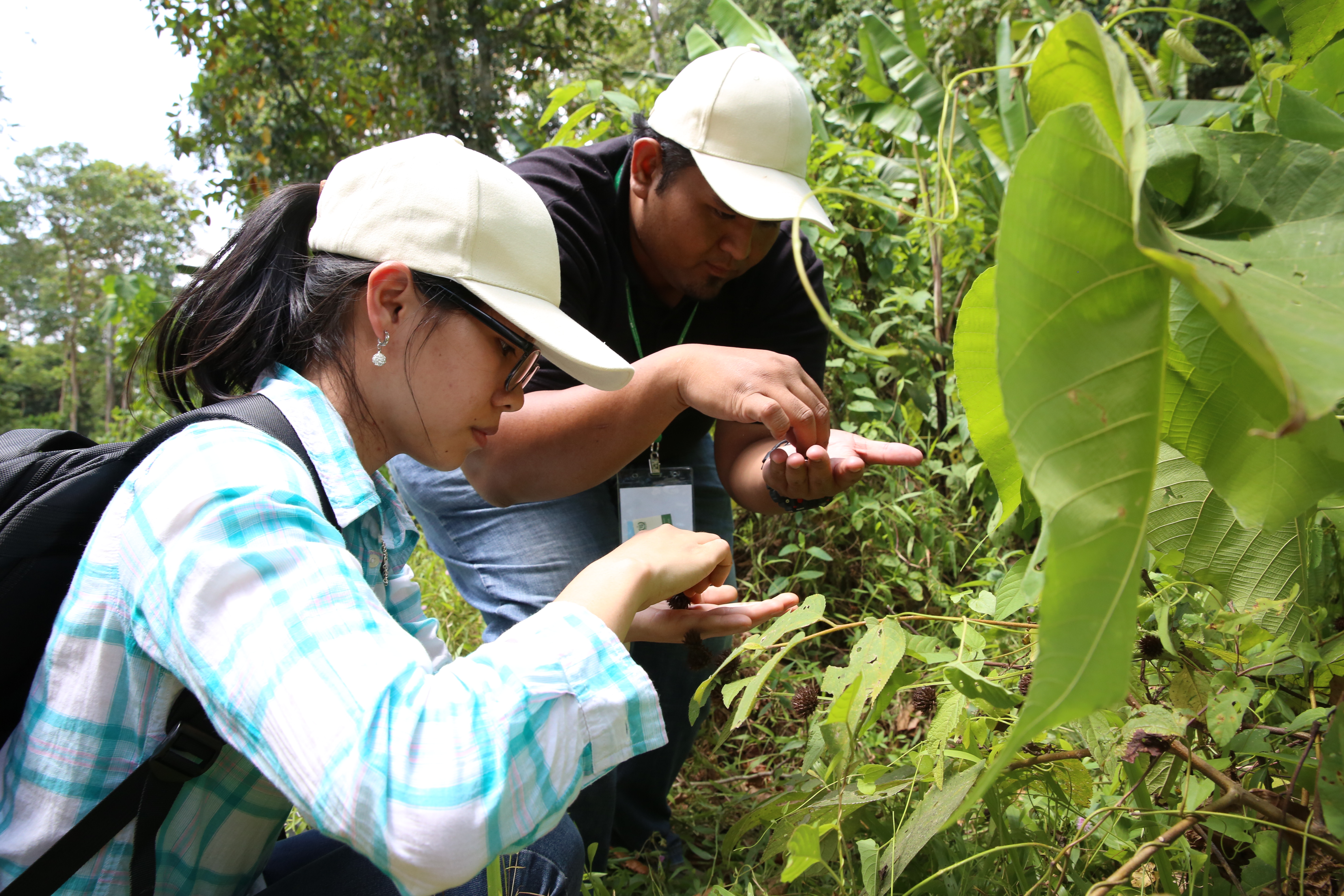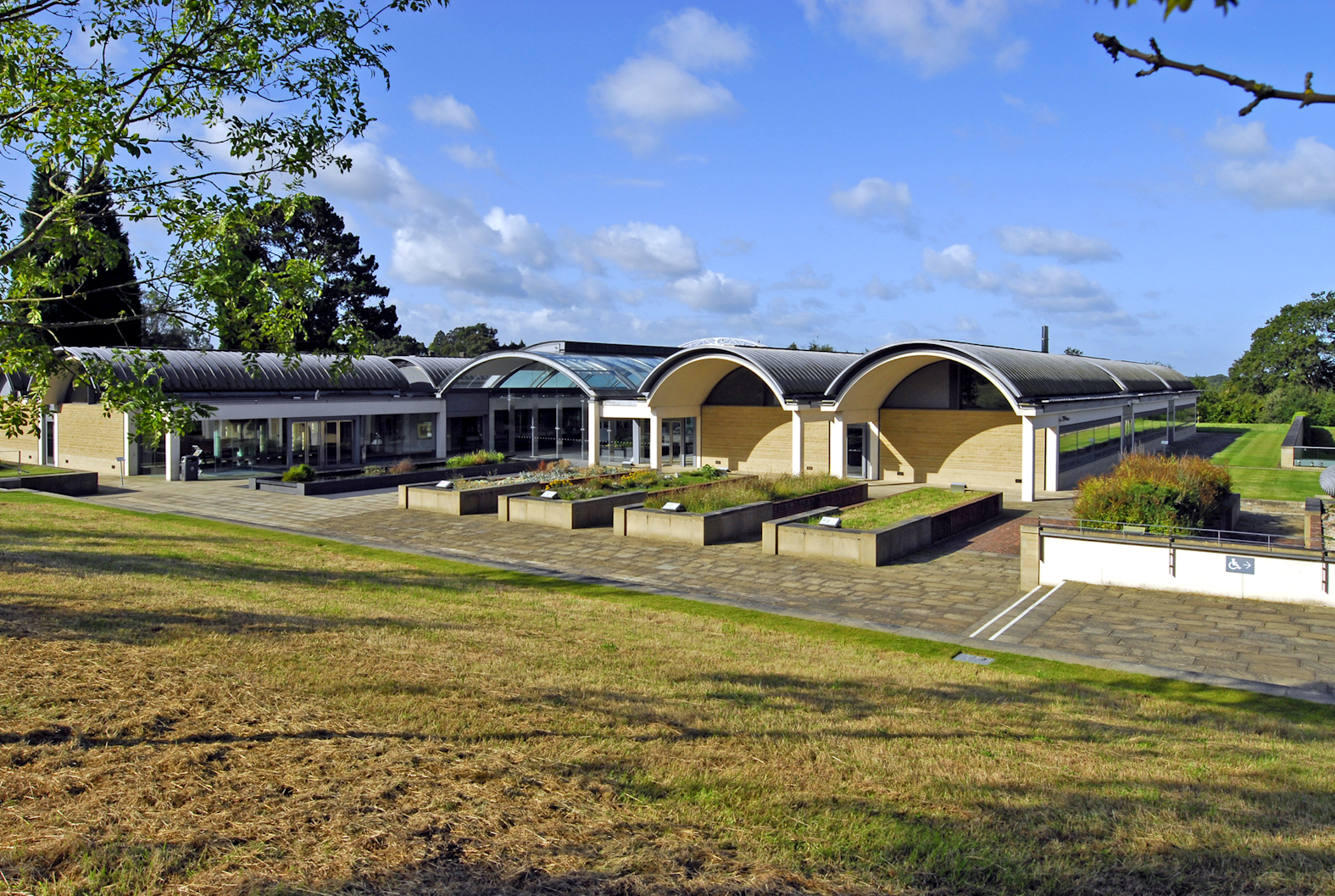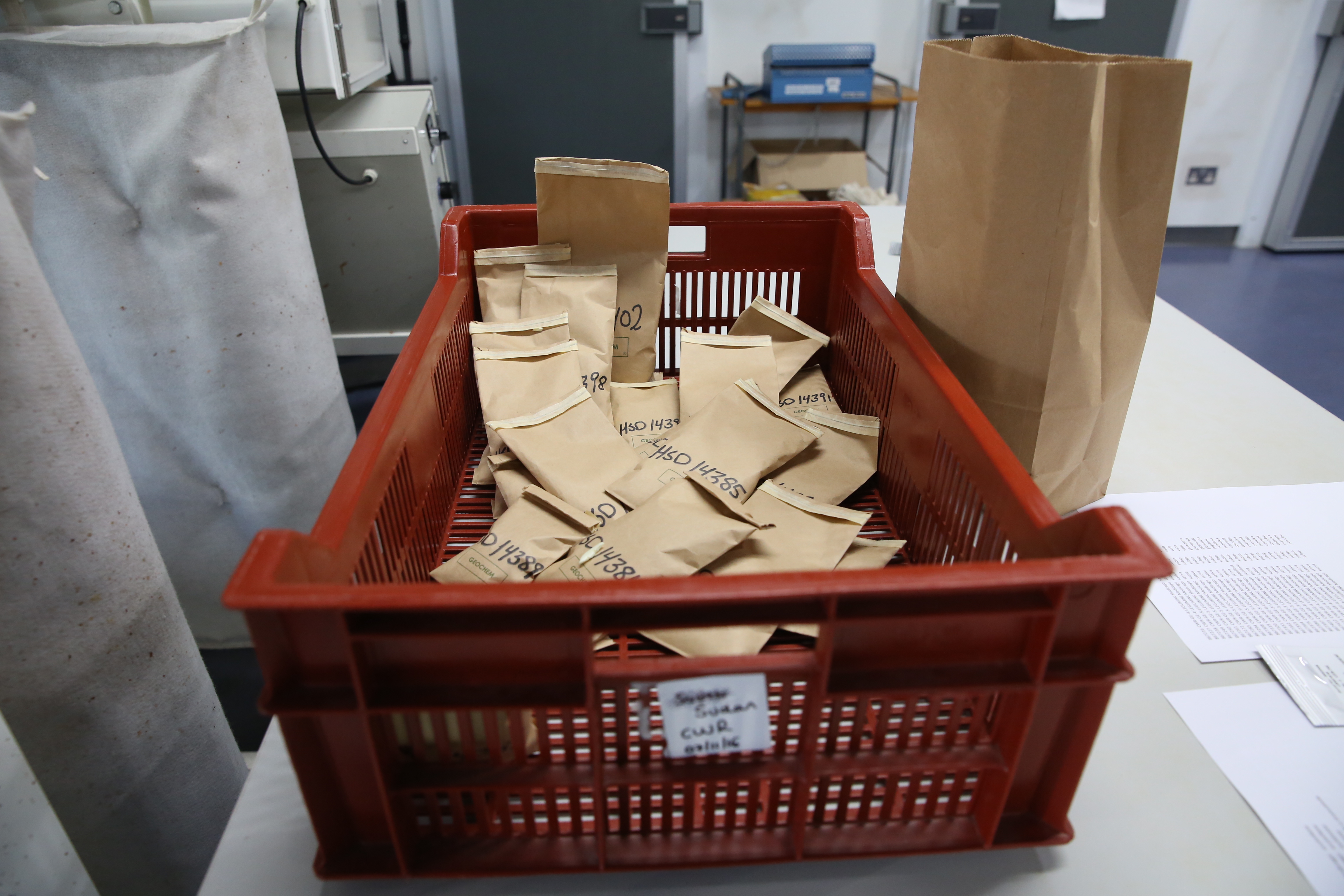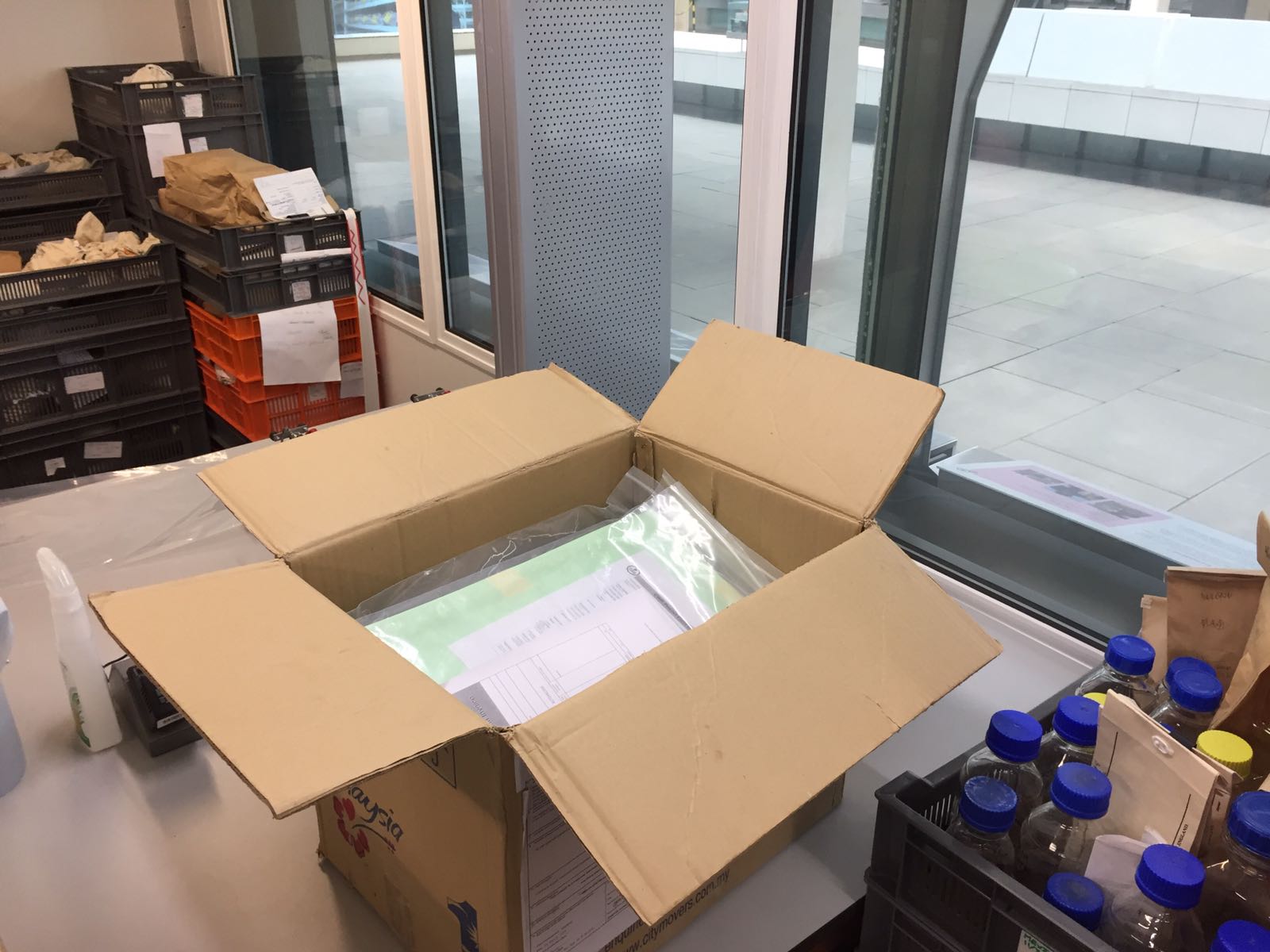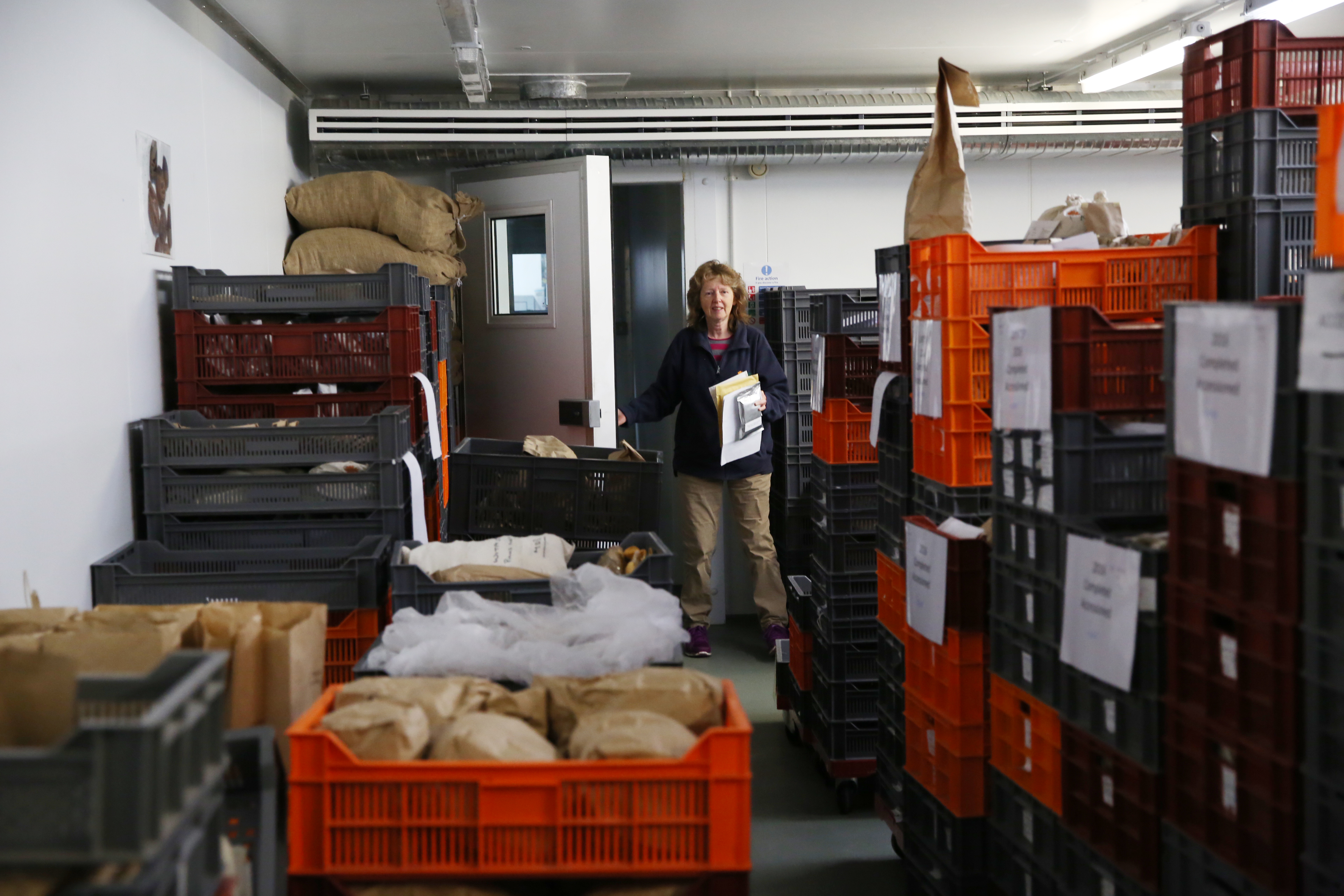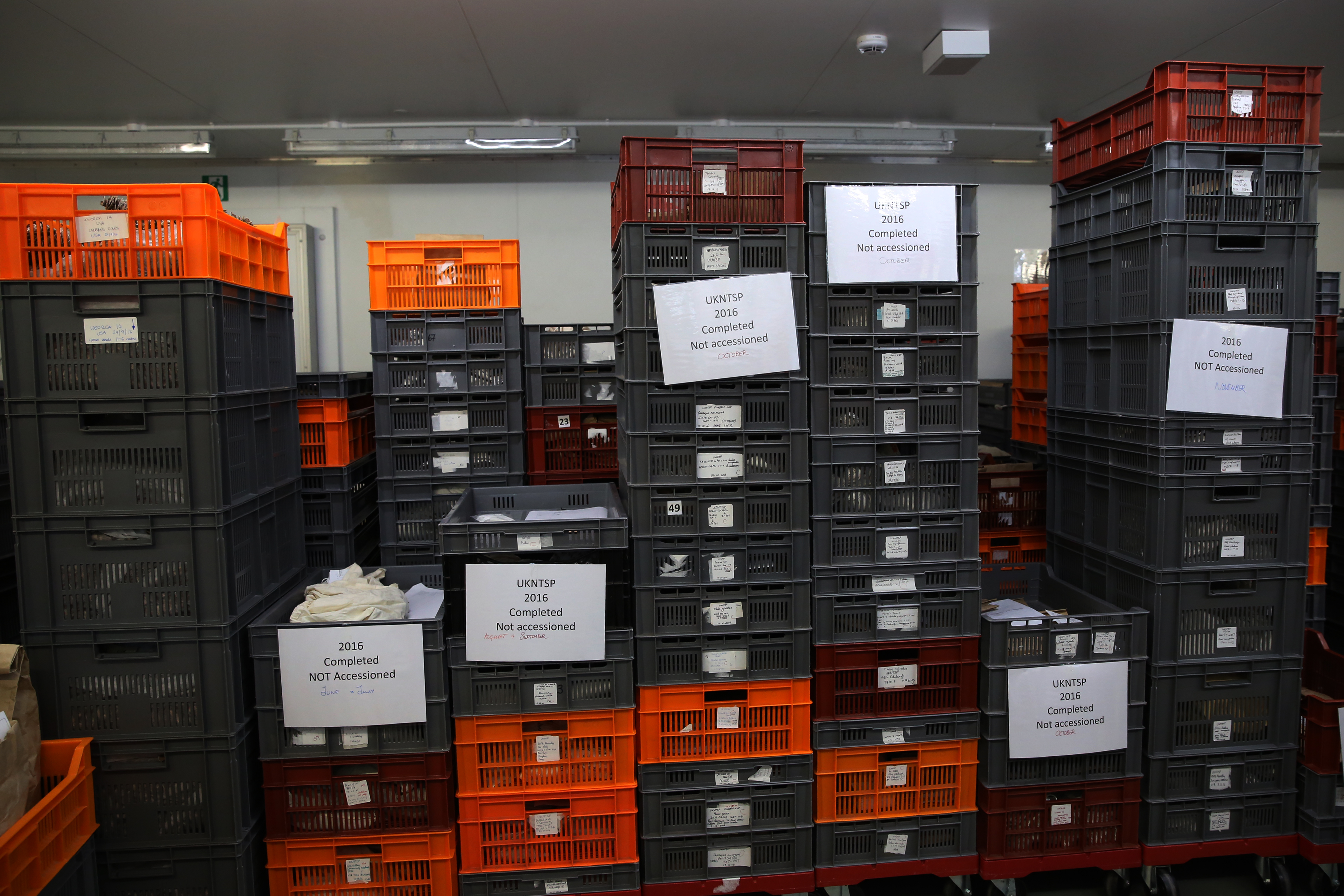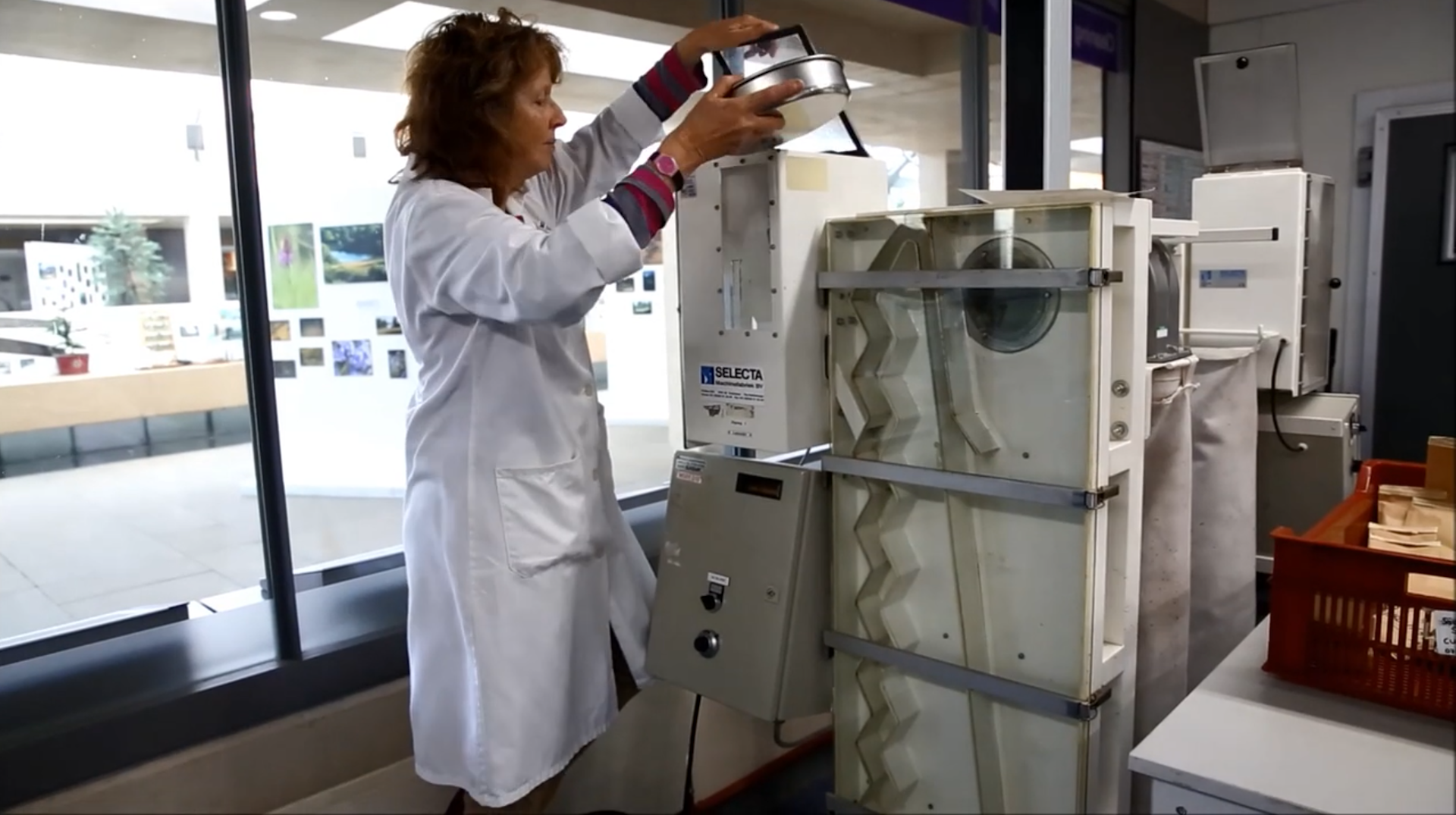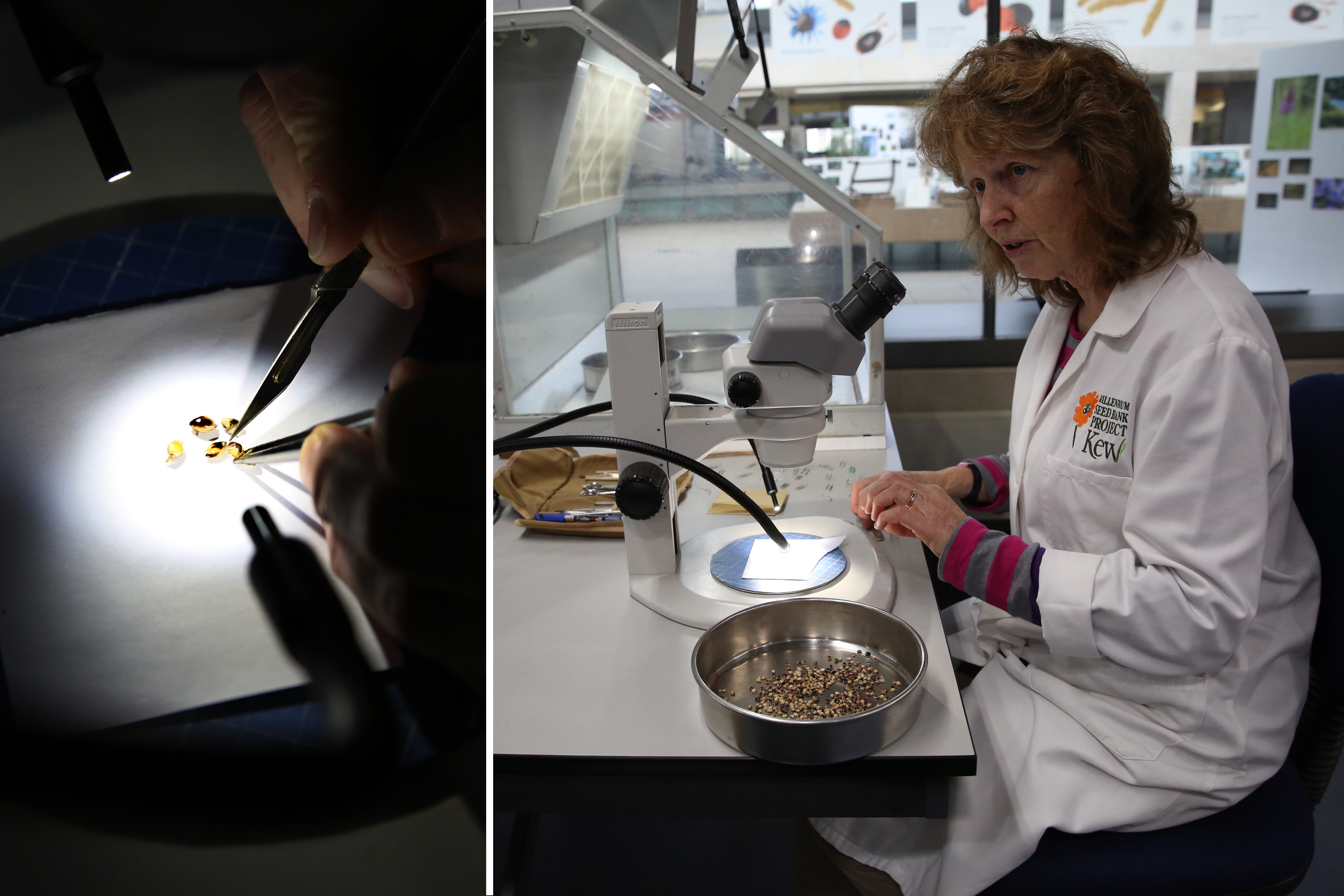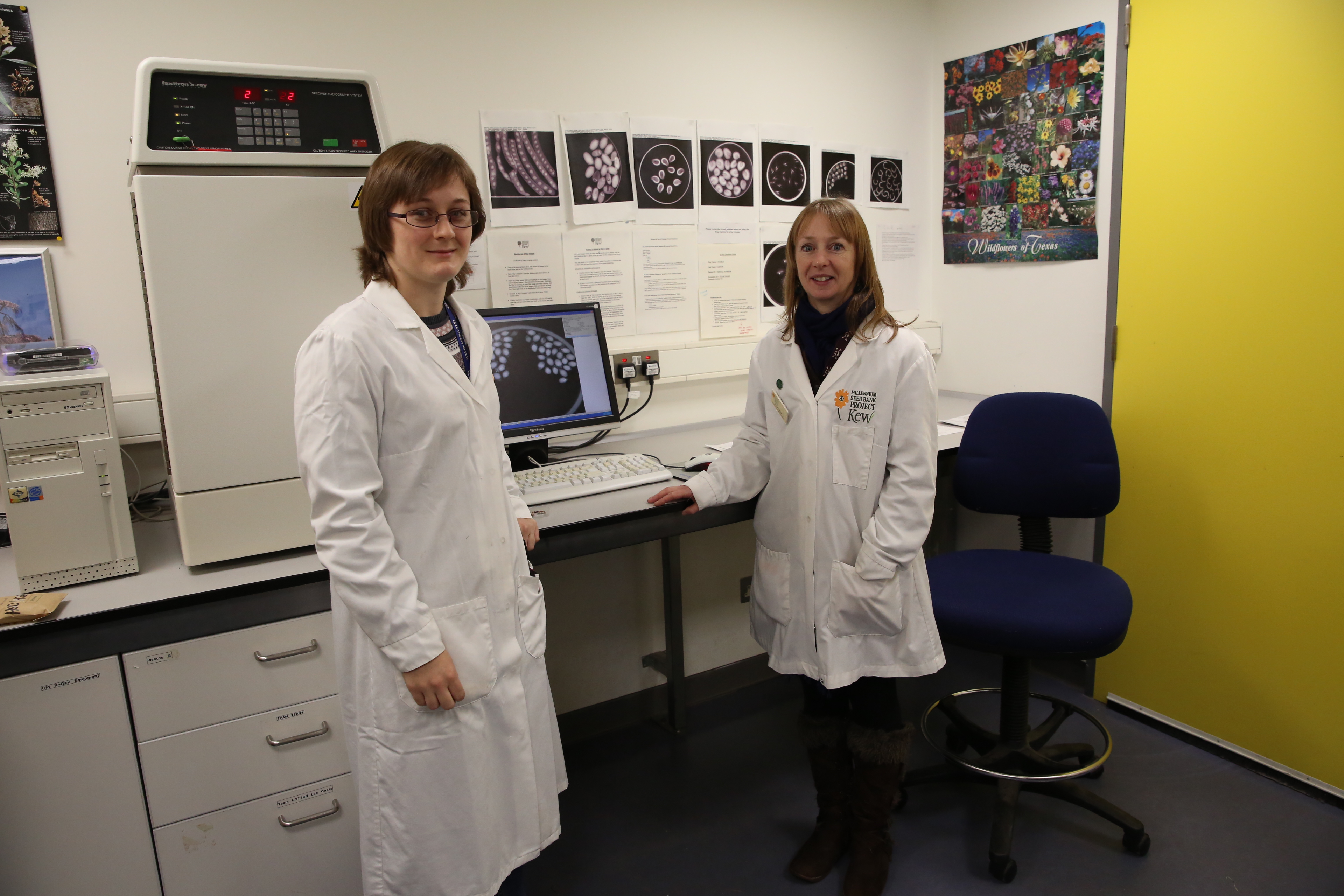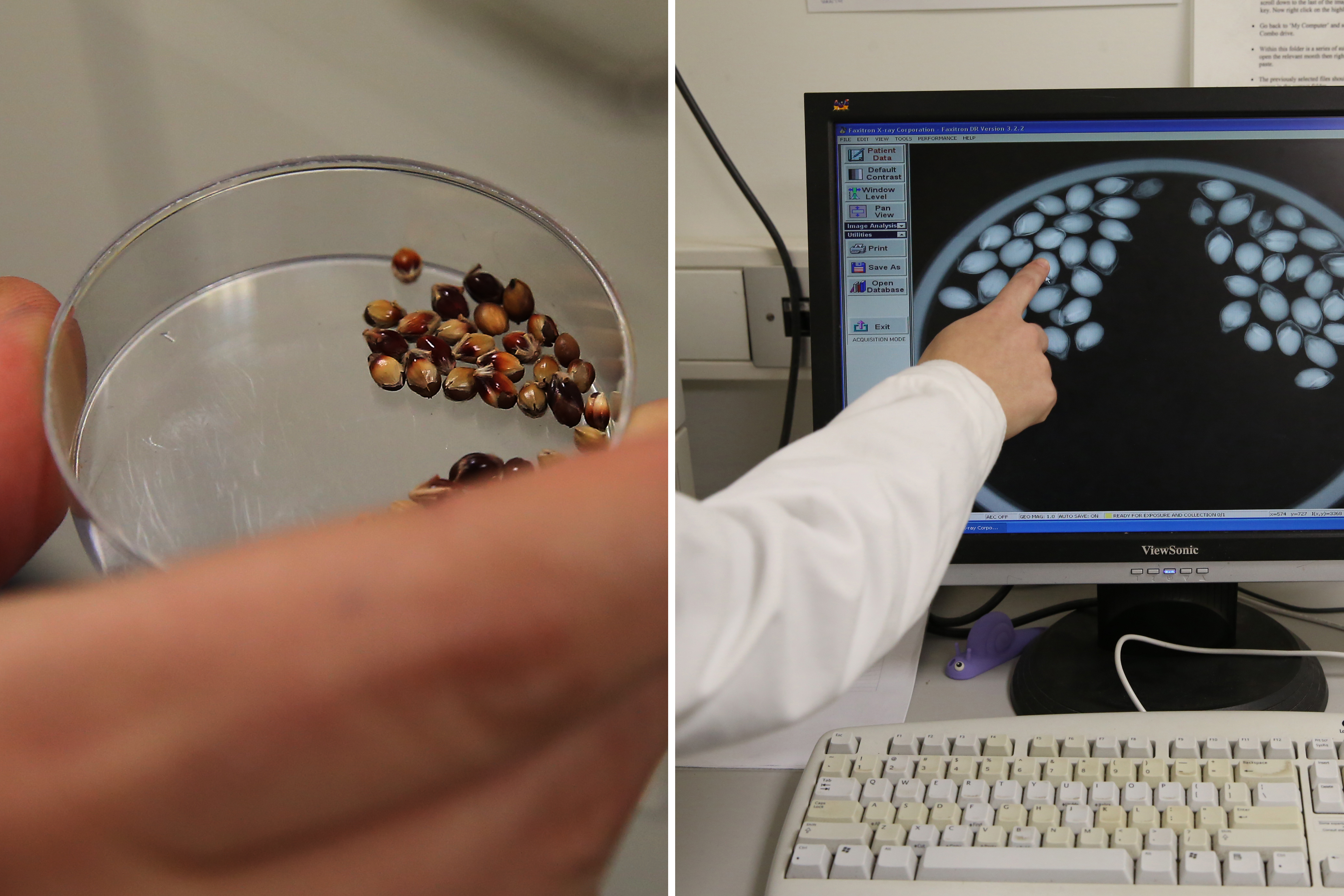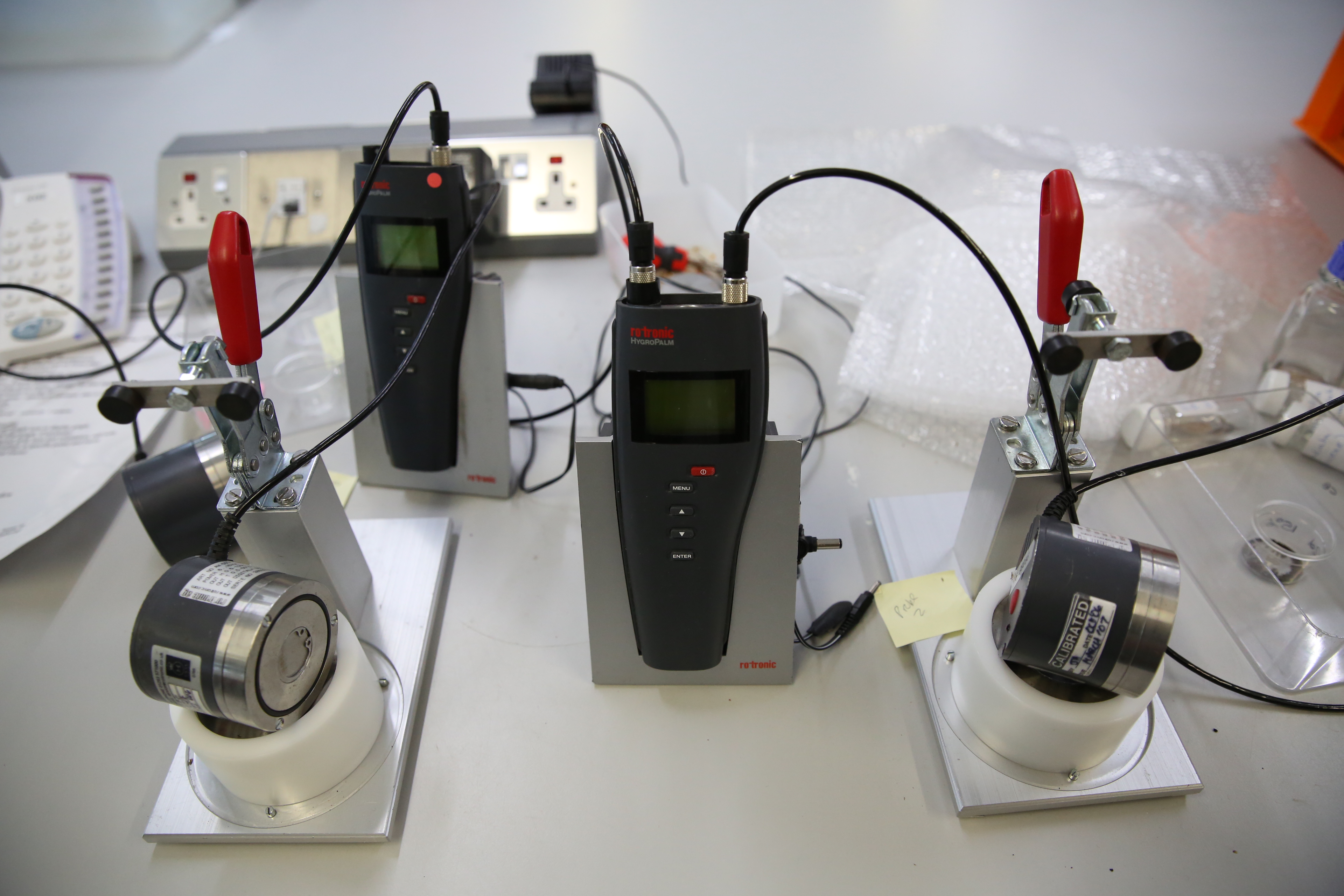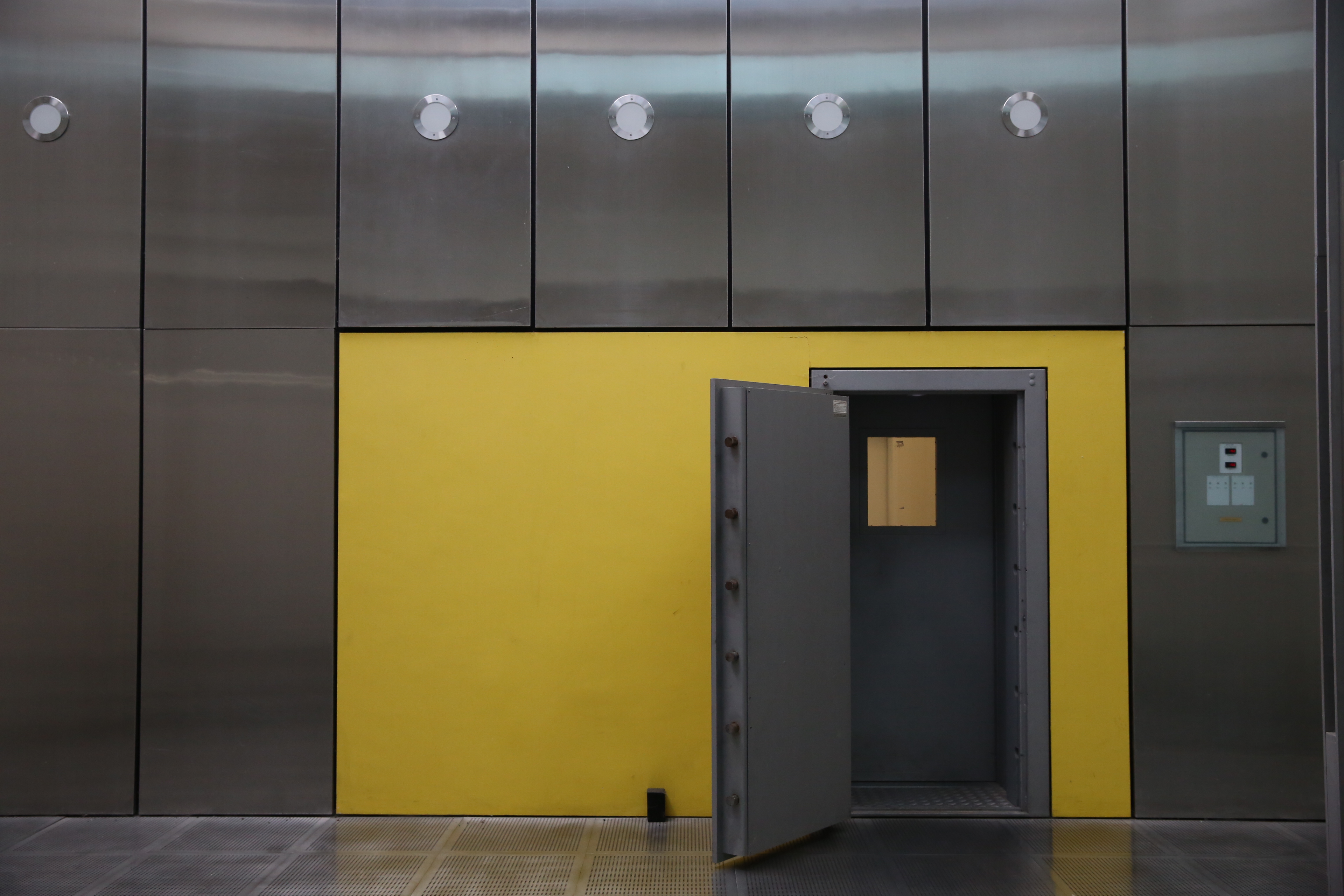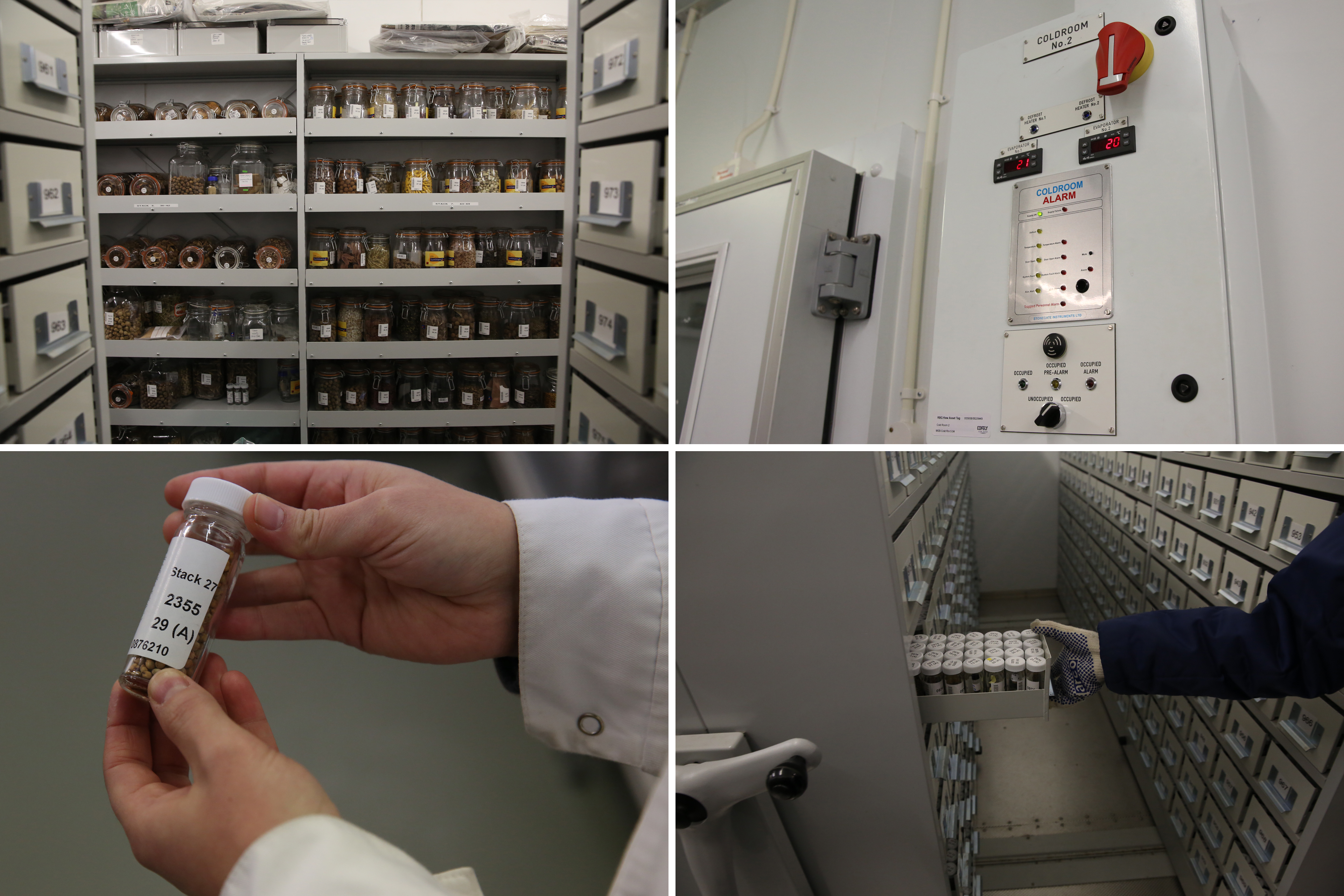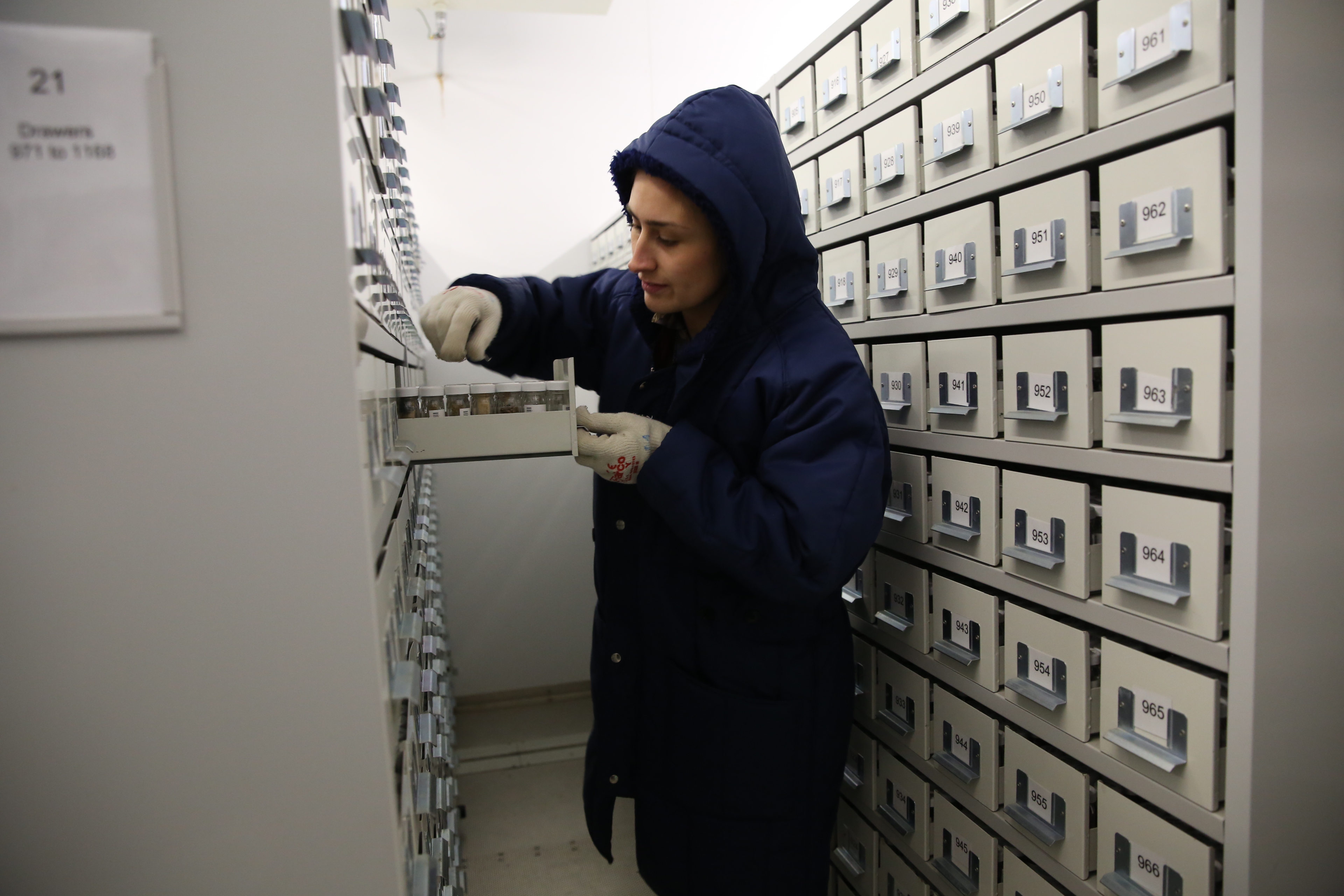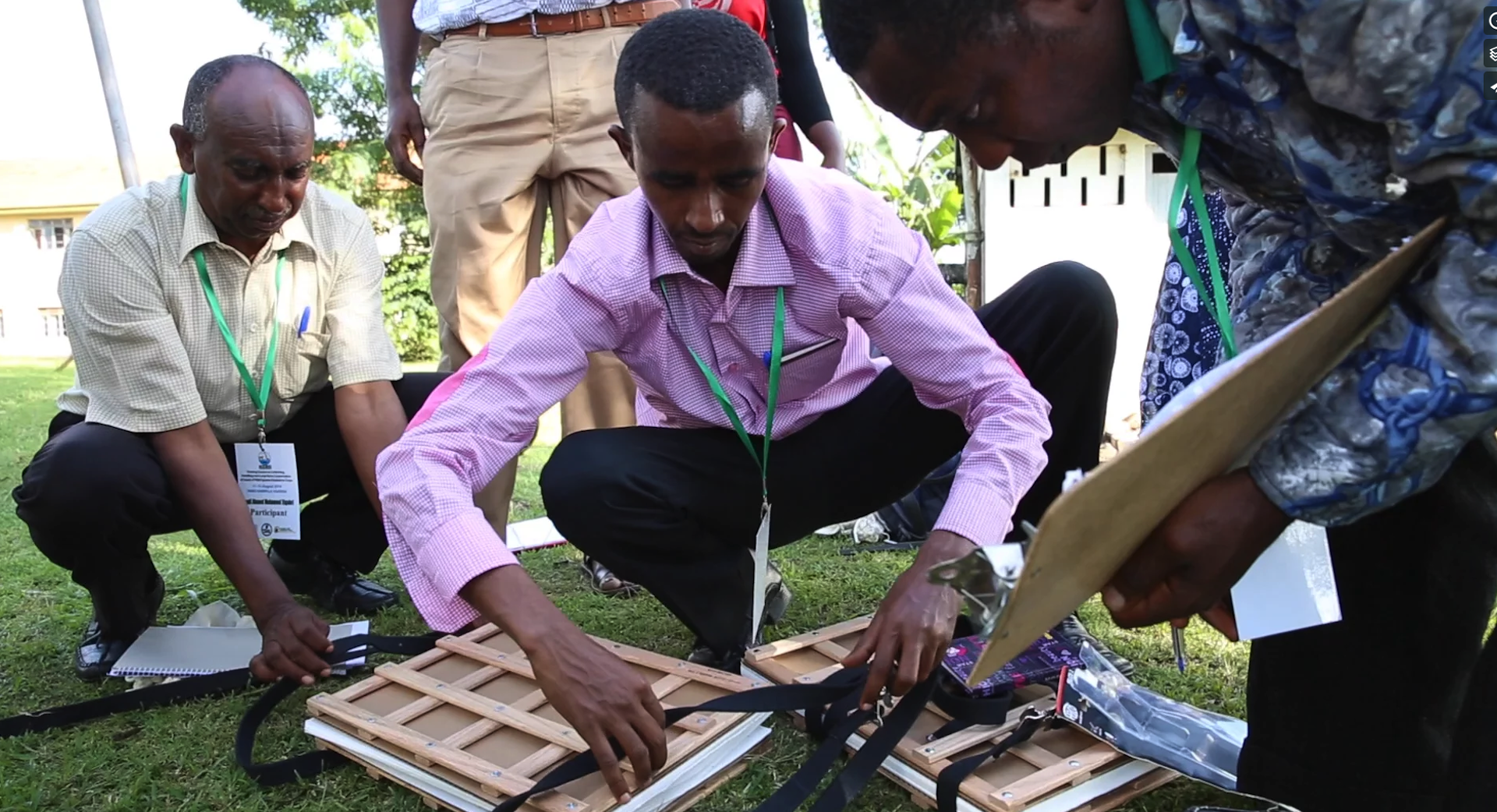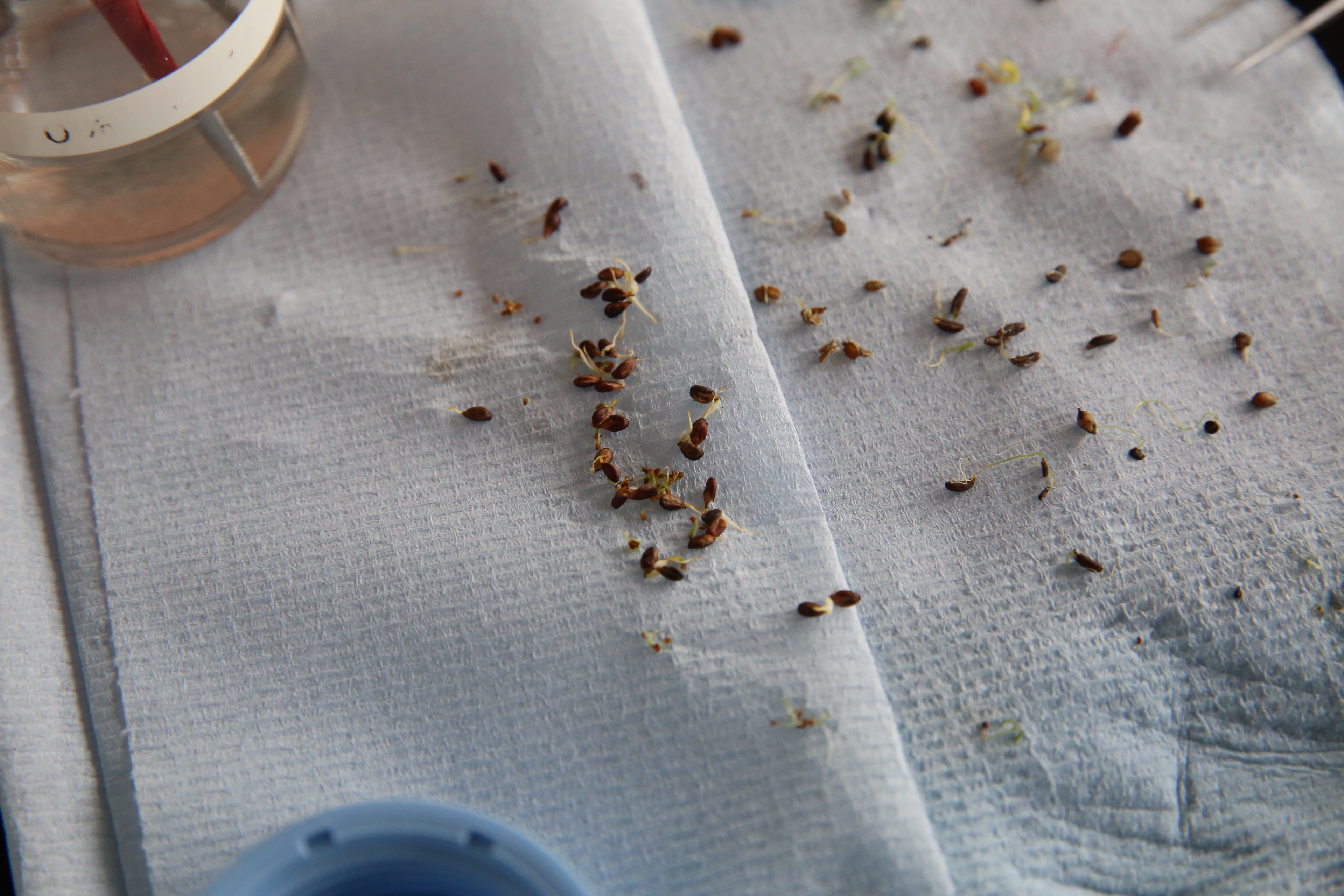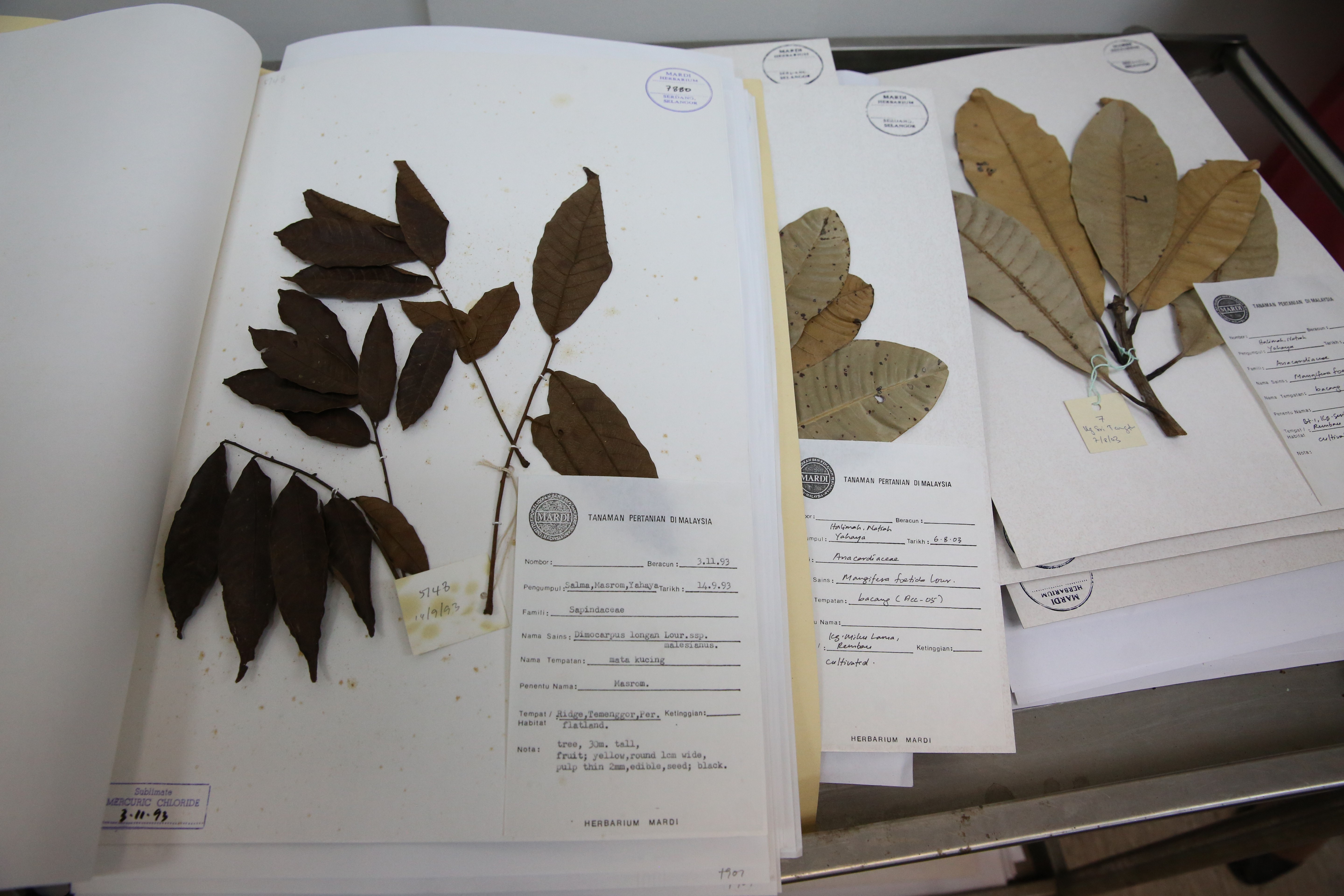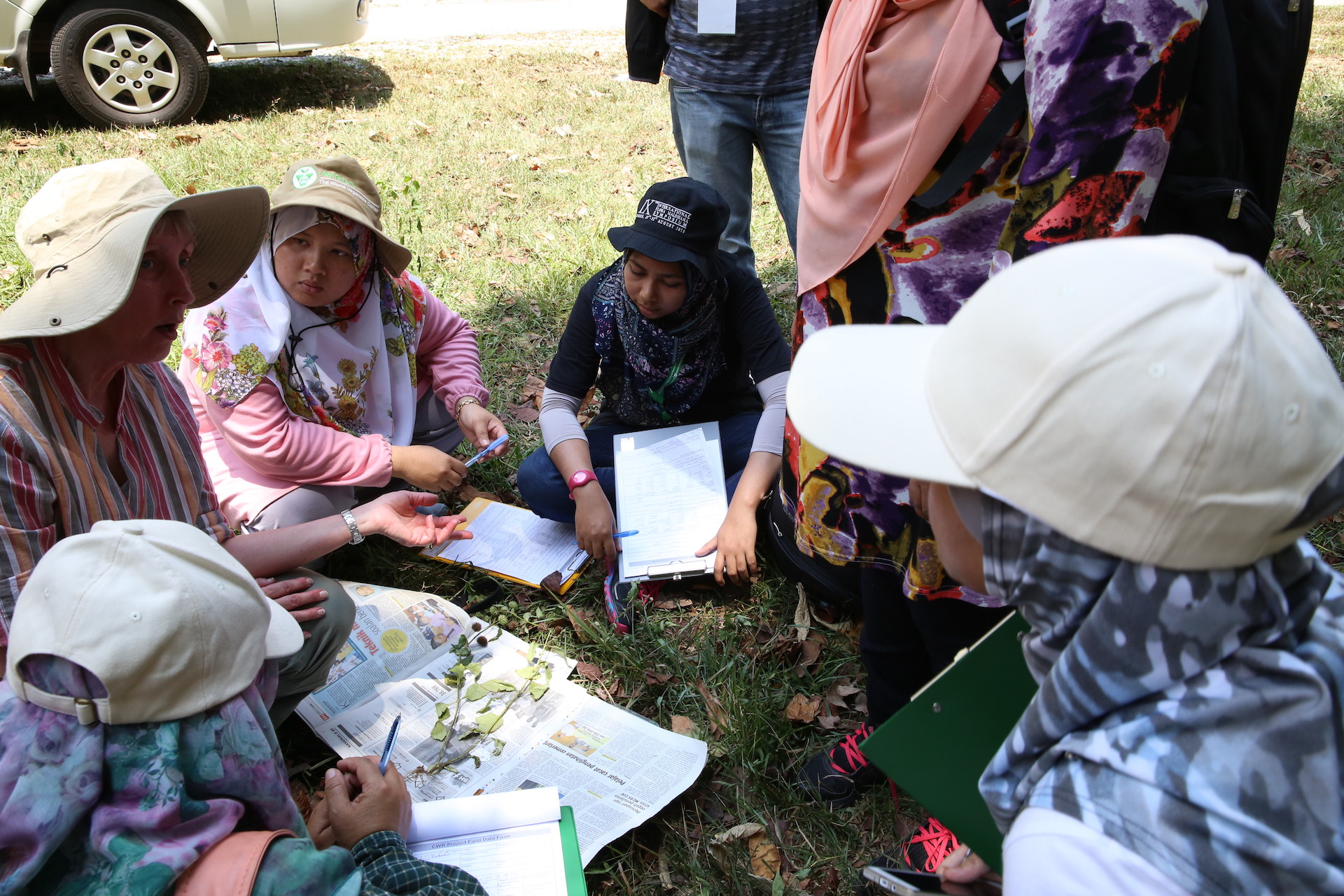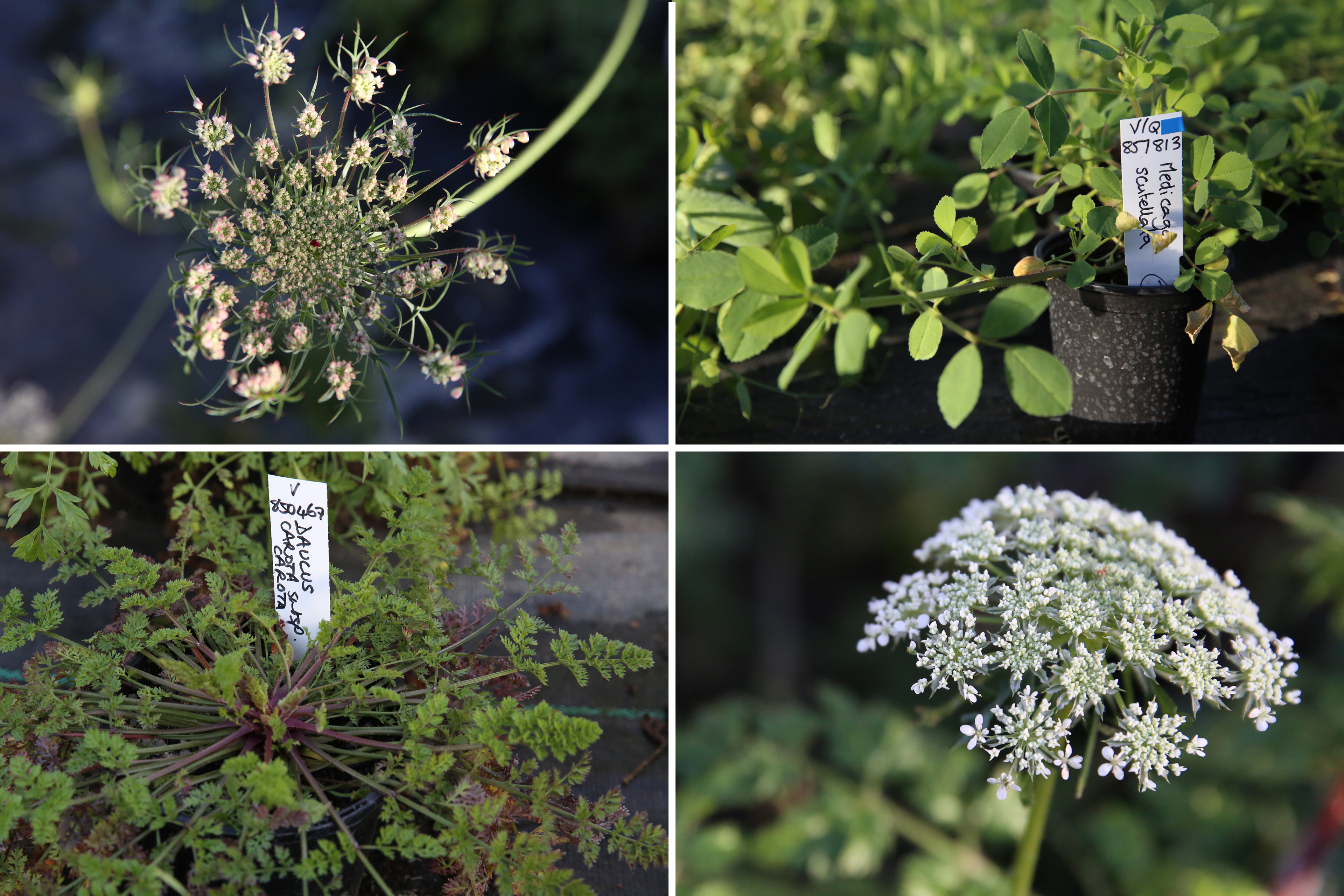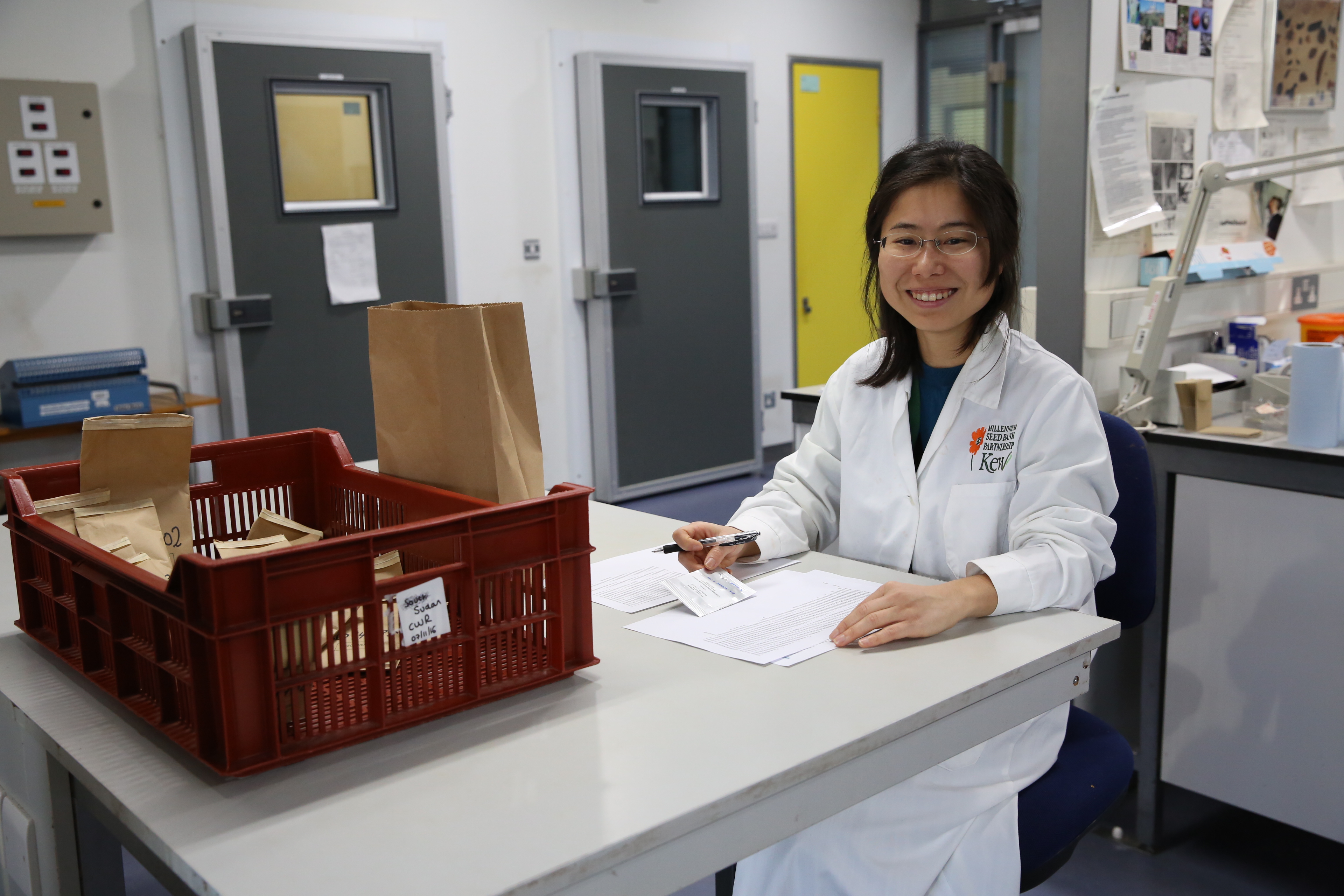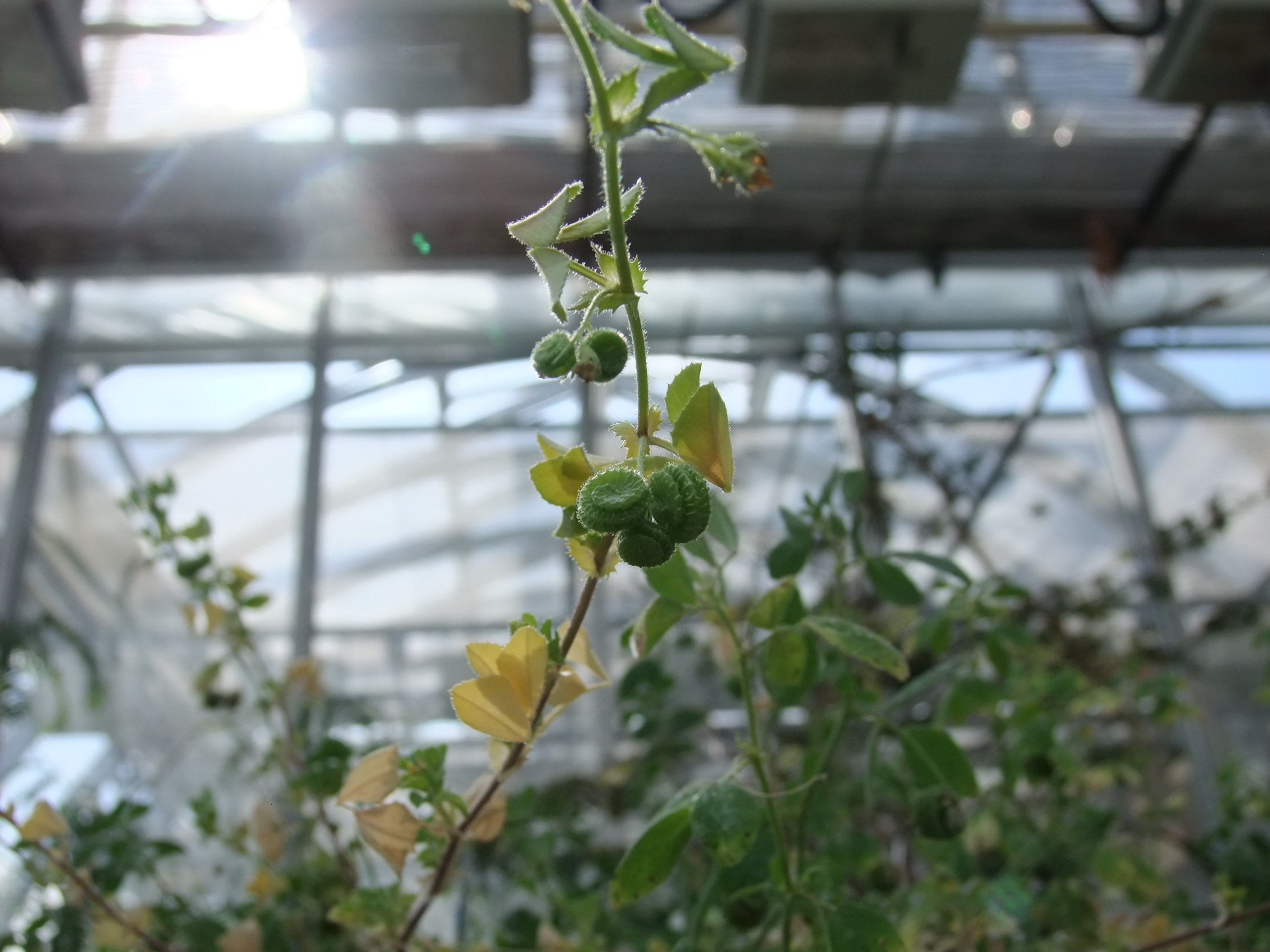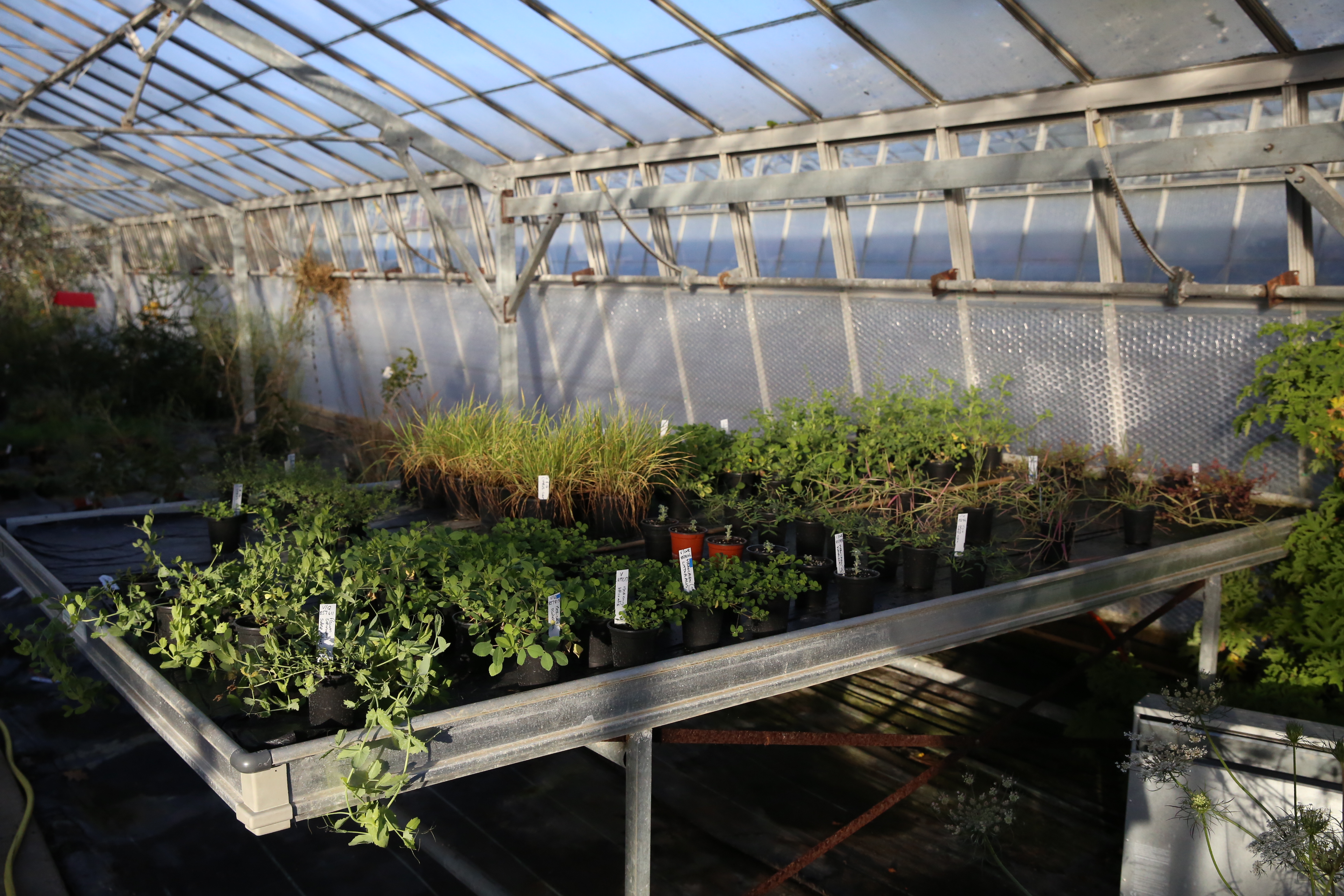-
From the edge of a cliff under the Georgian sun to the rain-soaked undergrowth of the Malaysian rain forest, the wild cousins of our domesticated crops are growing in hard-to-reach places all over the world. For centuries, we have ignored them, or worse, labelled them as unwanted weeds – until recently.
-
Interest in these plants is not completely new, but more and more scientists look to these crop wild relatives, as they are known, in search of traits that are missing from the crops that feed us – traits that can make our agricultural crops more resilient. But to tap into their sturdy nature, we need access to them. And many of these plants – if not most – are missing from the world’s genebanks.
-
The Journey of a Wild Relative: Entering the Millennium Seed Bank
Text by Oriole Wagstaff | Photos: LM Salazar
-
Under the Crop Wild Relatives Project, seed collectors and researchers from 24 countries are venturing into these wild spaces to gather over 250 crop wild relative species.
-
Once collected, these seeds are divided: one set is conserved in national genebanks; another is loaded into cars, lorries, boats and planes, to eventually arrive at a rural village in southern England. This is the site of the world’s largest seed bank for wild species, the Millennium Seed Bank (MSB), run by the Royal Botanic Gardens, Kew.
-
CONSERVATION
Under the Crop Trust led CWR Project, the MSB, Kew coordinates the collecting phase of a 10-year, global effort to collect, safeguard and make available the crop wild relatives (CWR) of our most relied upon crops.
-
In this interactive story, we will take you inside the MSB – entering dry rooms, exploring the laboratories and finally settling in the long-term cold store. This journey highlights the importance of each stage.
-
“It’s always exciting to receive seeds from the Crop Wild Relative project partners. We’re seeing a lot of material we’ve never seen before including many plants which have never before been banked,” explains Janet Terry, Seed Collections Manager.
-
The brown paper bags in the photograph came from Sudan and hold hundreds of seeds of wild relatives of sorghum and pearl millet. The Agricultural Research Corporation in Sudan joined the CWR Project in 2015.
-
“This is their first shipment,” says Chris Cockel, Interim Crop Wild Relatives Project Co-ordinator, MSB. “More seeds will soon come. The Sudanese team is busy searching for and collecting relatives of 10 staple crops, including chickpea, cowpea, and finger millet.”
-
When a batch arrives it is unpacked. All contents are checked – paperwork, herbarium specimens, and seed packets.
-
“All packages must have these three items,” says Janet. “Seed packages alone are useless. For example: we need to know the where, when, what and who is associated with the collection. Electronic data will have been sent before hand. The more we know about the seeds, the more useful it will be for scientists working with them.’’
-
All material collected under the Crop Wild Relatives project is shared under the terms of the Standard Material Transfer Agreement (SMTA) within the framework of the multi-lateral system of the International Treaty for Plant Genetic Resources for Food and Agriculture (ITPGRFA).
-
At the MSB, as in most genebanks, everything will then end up with a serial number, which allows the seeds to be tracked through the system.
-
The Drying Room
After unpacking, seeds are taken to the dry room where it is 15°C and 15% relative humidity. This is similar to the humidity in an airplane.
-
“Drying seeds is vital. It slows down biological processes inside the seed which reduces deterioration,” says Janet. “Drying must begin in the field, as soon as they are collected.”
-
When harvested, up to 50% of fresh seed weight is water which would kill the cells when frozen. For that reason, seeds remain in the dry room for at least a month, to ensure they are dried to between 3-7% moisture content.
-
Properly drying seeds extends their lifespan by up to 40 times and ensures the seeds can be frozen without damage.
-
Once dried, the seeds are cleaned to remove unwanted material where needed. It’s important to reduce unnecessary bulk, as the bank has limited capacity. This also minimizes the risks of plant disease, makes drying easier and ensures good quality collections.
-
Some seeds are robust, others fragile, so cleaning them requires different tools and great skill.
-
The sorghum seeds pictured here are sieved to remove dust and debris. “These are amazing collections, cleaned very well in country, so there’s very little to remove,’’ Janet noted.
-
The high quality of this collection is a real indicator, not only of the commitment and care shown by collectors, but of successful training and capacity building.
-
‘‘The average time to clean a seed collection is 2 ½ hours, but some collections might take 19 hours, some might take 10 minutes,’’ Janet explains.
-
Seeds go through an aspirator (shown here), which uses air flow to separate seeds by weight and to remove extra debris and any seeds that might be empty or contain insects.
-
During the cleaning process the quality of the seed remains unknown. The seeds are cut with the aid of microscopes to see if the quality of the cut seed is up to standards.
-
The team is looking for a white starchy consistency; anything that will inform other processes down the line, or give hints as to how you might germinate this seeds. “Even after 32 years here, I can still open a packet and see something I’ve never seen before, and wonder what does that look like inside?’’ says Janet.
-
After cleaning, a sample of 20-50 seeds from each collection is X-rayed, depending on the collection size. This provides an initial indication of quality.
-
Lucy Taylor (left) has worked at Kew for 3½ years, while Frances Stanley (right) has processed collections for more than 20 years. In one day, hundreds of seeds might be X-rayed at the MSB.
-
But an X-ray cannot show which seeds are alive or dead. It can, however, show which seeds are full and which are empty. This is important as the MSB works to conserve good seeds. “We are after those seeds with the potential to grow and contribute to crop improvements,’’ says Lucy.
-
Let’s look at the sorghum collection from Sudan. In the X-ray pictured here, 46 of the 50 seeds are good quality and four are infested.
-
“This is a good result and the kind of numbers we hope for,” says Lucy. “This does not show whether the seed will germinate, enabling it to grow and develop, but it does provide an idea about the quality of the collections.”
-
Digital X-ray machines make it easy for the MSB staff to send images of partners’ collections, to explain how good the collection is.
-
“This feedback is important for the partners, so they can change – if need be – their processes or activities in the field,” says Chris.
-
Once the seeds are X-rayed and counted, and before they go into the bank, the final step is to make sure they are dry enough for storage. This is done using a rotronic, pictured here, that measures equilibrium relative humidity.
-
Seeds should be at around 17% equilibrium relative humidity (which equates to 3-7% moisture content). If they are not dry enough, they return to the dry rooms. Once they are suitably dry they are then put into air tight containers. Now, they are ready for the vault.
-
The CWR seeds are safeguarded here, in the cold vault of the MSB, as part of the institution’s overall collection. Currently it stores more than two billion seeds. This represents over 37,600 species, from 189 countries.
-
The vault was designed by Stanton Willliams Architects and built in 2000. It can house samples from at least 30% of the world’s flora in a space the size of 30 double decker buses.
-
In seed banks, for every decrease in 5°C the life span of a seed doubles until roughly -20°C.
-
The MSB seed vault is kept at a constant -20°C, but for the MSB staff members that spend time within its walls, it feels more like -26°C (due to the wind chill factor). An intricate alarm system restricts the time spent in the vault to around 10 minutes, at any one time.
-
Each collection is assigned a location, using only the unique serial number, in one of the thousands of slots within the bank.
-
Under these conditions, the lifespan of each collection depends on the species, and often, as is the case for the Sudanese sorghum seeds, this timescale is unknown (at least until now). “Some seeds may live for only a few decades, others for centuries and, in some cases, even millennia,” says Janet.
-
Next on our journey: germination testing.
After two weeks in cold storage, a sample of each collection is removed from the cold room to assess what proportion of the collection is capable of growing.
-
‘‘We don’t know the viability of any seed until the end of the process, when we do germination tests,” explains Beverley Maynard, a Seed Processing Manager at the MSB.
-
No more than 10% of the collection is ever used for germination tests. And these tests are carried out at least every ten years after the first test. These tests provide vital information on seed survival timescales in long-term storage.
-
Back in August 2014, Beverley played a vital role in training our Sudanese partners, during the seed conservation training course that was carried out in Uganda, wherein partners from Ethiopia, Kenya, Ghana and Nigeria also participated.
-
A good result from a germination test is if 80% of the sample sprouts. If only a few grow the seeds may require different conditions. For example, they may need to be chipped, or the team may need to simulate a fire.
-
This process provides valuable insights into growing requirements that may enable the survival of threatened species. In some cases, if germination is incredibly low, then re-collection may be necessary.
-
To keep track of the two billion-plus seeds conserved at the MSB, every collection has an accompanying herbarium voucher, a dried plant specimen, from the population the seeds were collected from.
-
In this image, staff from the MSB demonstrate plant pressing for herbarium specimens on a capacity building course hosted by Malaysia Agricultural Research and Development Institute (MARDI) in Malaysia 2016.
-
These herbarium vouchers are crucial. Without them we cannot know for sure which crop wild relative species we have collected and what potential genetic diversity may be available for research.
-
Most partners send complete collections, including herbarium specimens. But there are exceptions. When the herbarium specimen is not available, a sample of seeds is grown in the MSB glass houses.
-
Pictured here: wild carrot (Daucus carota) collected in 2015 from north Sardinia, and alfalfa (Medicago scutellata) collected from Cyprus in 2015. But between their arrival at the MSB and the moment of this photo, the seeds have undergone the long chain of seed processing to ensure these species are properly conserved.
-
Seeds are stored in the MSB cold rooms, not simply for their safety or to keep them cold, but to be shared with the world’s breeding community.
-
Samples of each collection, normally 100 seeds each, are packaged separately in foil bags ready to be shipped to scientists and researchers at other genebanks and research institutions who will also conserve and unlock their hidden potential. (And in fact, some are already working on this.)
-
Aya Matsushita is an intern at the MSB. Here she is preparing alfalfa (Medicago marina) for shipment to the South Australian Research and Development Institute (SARDI).
-
Collected in Italy, by the team at the University of Pavia during summer 2015, these seeds are being used by SARDI who is leading the CWR Alfalfa pre-breeding effort. Their aim? To identify new sources of drought tolerance in wild alfalfa for use in already existing varieties, currently threatened by droughts.
-
Alfalfa is a vital forage crop relied upon in more than 80 countries. Climate change is projected to further stress alfalfa production in areas where the crop is most important, including Chile, Kazakhstan and China, where breeders are collaborating closely with SARDI.
-
Pre-breeding efforts are crucial to help farmers meet future food demands and enable agriculture to respond to new threats and diseases.
-
The pre-breeding stage of this project provides a link between the genebanks and the breeding community. This link is what will enable us to adapt our crops to new challenges brought about by climate change.
-
Each step along a seed’s journey, from collection in the field, to cleaning and banking right through to the transfer to pre-breeding partners, is crucial to adapting our agriculture to climate change.
-
Material collected and processed within this project is available under the terms of the SMTA within the framework of the multi-lateral system, as established under the ITPGRFA.
